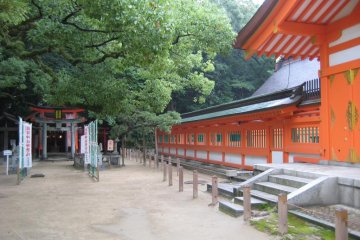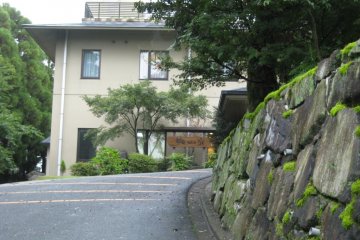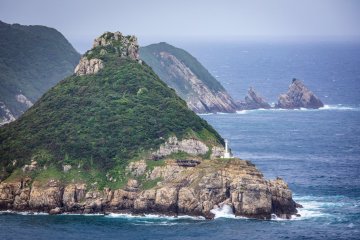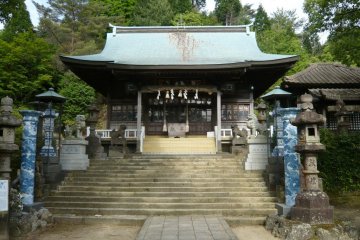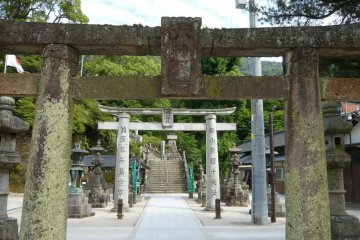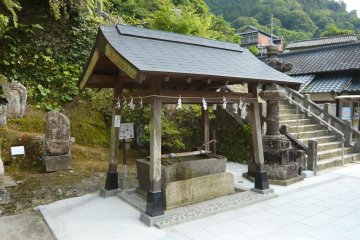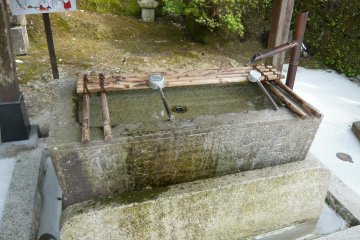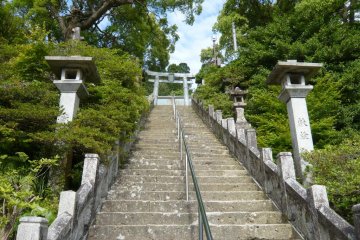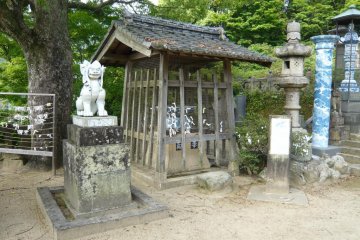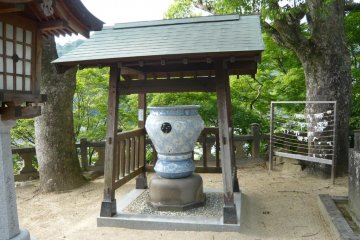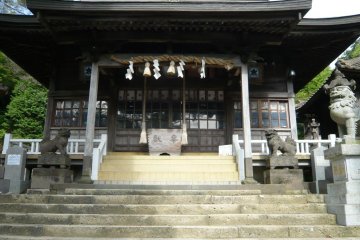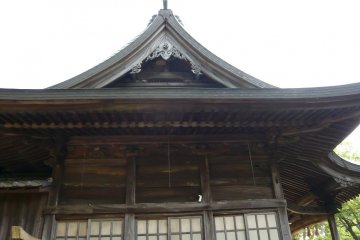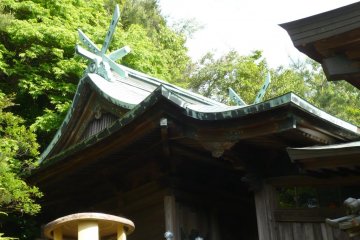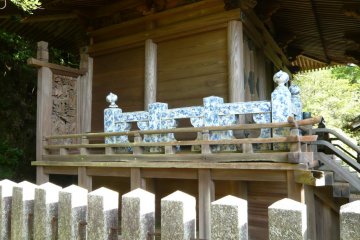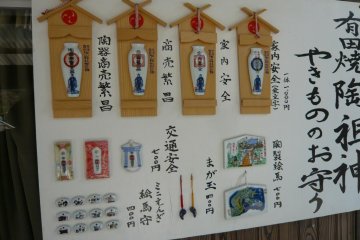Sueyama Jinja is commonly know as Tozan Shrine. The shrine was founded in 1658 as Arita Sarayama Sobyo Hachimangu and is a branch of Kamihara Hachimangu Shrine in Imari which is dedicated to Ojin Tenno. It is only since the Meiji period that this Hachiman Shrine (Shrine for the God of Archery) was called Tozan which means “pottery producing area.” Additionally the ancestor of the feudal clan Nabeshima Naoshige and the father of Arita porcelain Ri Sanpei are worshipped here.
In the precincts of the shrine several memorial monuments and monuments to the honor of the great people or Arita are to be found. These include the monuments for Narimatsu Nobuhisa who was a famous local governor in the Edo period. Egoshi Reita the great scholar, Fukagawa Eizaemon 8th who contributed to the pottery industry and Fukagawa Rokusuke who started the Arita Porcelain Fair. Also on top of the mountain, the monument of Ri Sampei was erected in 1917 in commemoration of the 300th anniversary of the first production of porcelain in Arita. Thus the virtue and power of the former leaders of Arita is honored at this location.
Tozan Shrine was founded in the Edo period under the name of Arita Sarayama Sobyo Hachimangu and dedicated to the fathers of pottery to pray for the town and the prosperity of Arita porcelain. It is situated in a picturesque location on the foot of Renge’ishi Mountain where you have a good view of the town. Cherry blossoms, azaleas and altheas, the national flower of Korea to which Arita has a close relation color the shrine area throughout all seasons. If you have a look around you will discover the porcelain guardian dogs (1887, dedicated by Imaemon 10), the porcelain Torii (shrine archway, 1888, dedicated by the district of Hiekoba) and the big water basin (1889, dedicated by the district of Nakanohara, created by Ide Kinsaku). All of which are pieces of great elegance, which makes the shrine resemble a natural open-air museum.
Enshrined gods: Ojin Tenno, Nabeshima Naoshge, Ri Sanpei
Festivals: Festival for ancient potters (May 4), Annual shrine festival (October 16 & 17)
Founded: August 1658 as a branch of “Arita Gosha Hachimangu Shrine” in Imari




